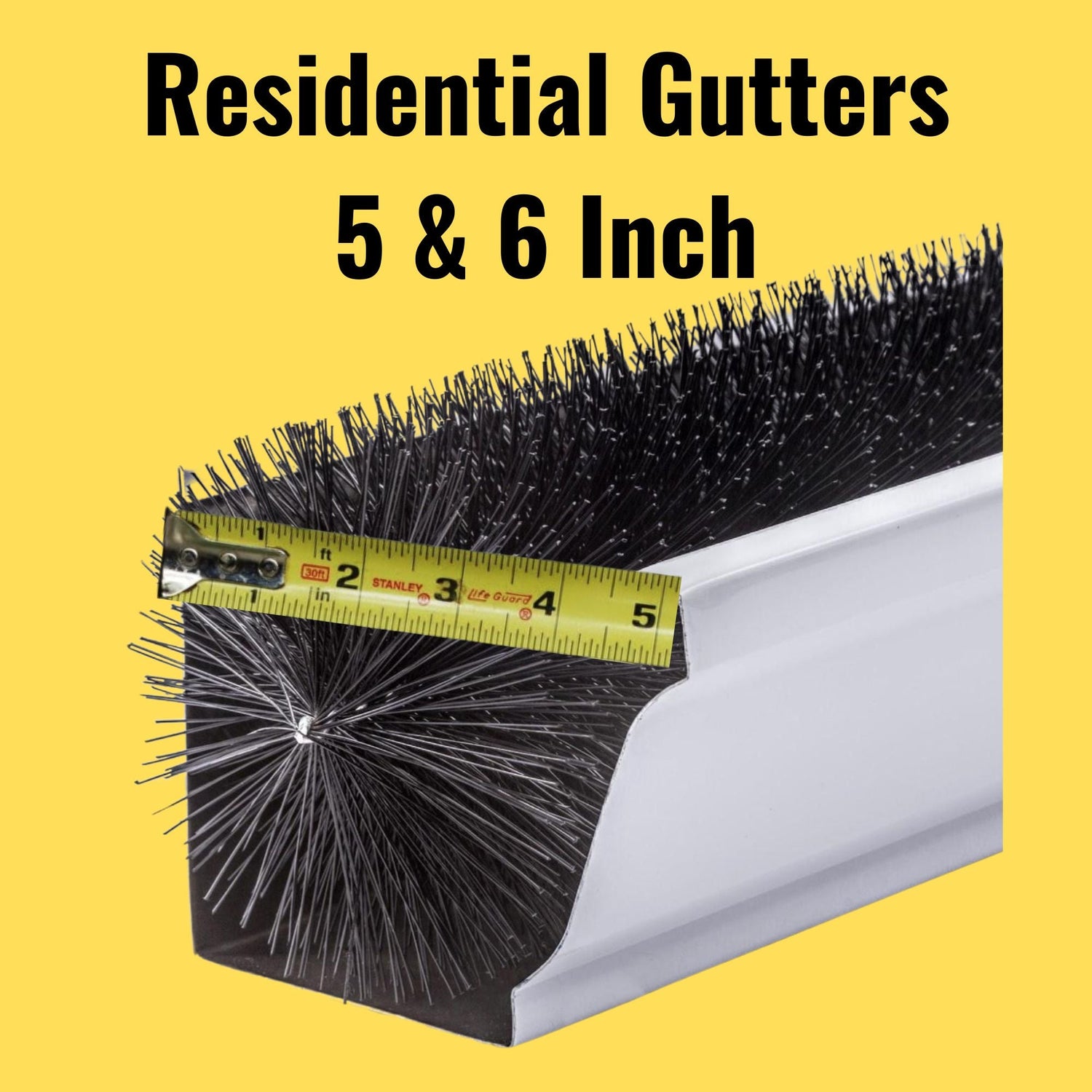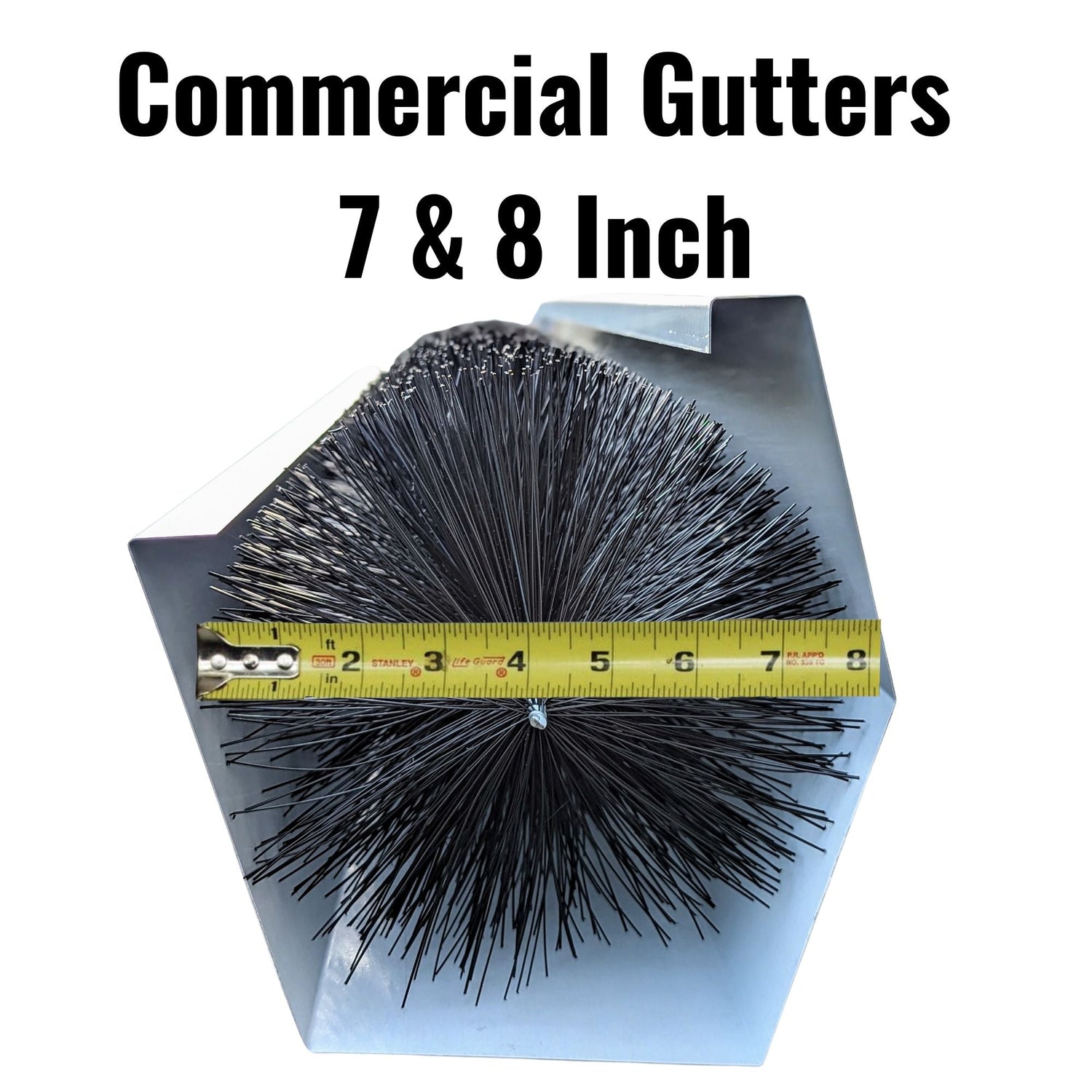I spent 24 years in the roofing industry and for 16 of those years, I ran my own company, Integrity Roofing LLC; which I started from scratch. Initially, I was under high productivity pressure because I started the company with no customers, no employees, almost no money, and my wife at home with 2 kids under the age of 5. Needless to say, I had to optimise every opportunity. I found Gutter Clearing jobs to be an excellent way to generate new customers, add additional revenue, and further extend the work day, week or season. The roofing business required us to work around the inclement weather. For example, if it was raining or even if there was only a threat of rain, we could not be productive on the roof due to the possibility of damage resulting from water entering the home. Therefore, we regularly relied on gutter clearing jobs to enable us to extend our profitable work time. We were capable of safely performing gutter clearings and generating revenue and profits even during the “down times” when it would rain. When organized properly, a gutter clearing business can be a nice profitable add-on service as well as a fulfilling and enjoyable enterprise. Below are some of the finer points required for keeping customers happy and staying profitable.
In order to be profitable, we would perform multiple gutter clearing jobs, one after the other, in a “route” fashion. When pricing out gutter clearings, or any small job for that matter, one of the main components of the price is the cost of the “drive time”. If there are 2 men (or women) in a truck and it takes 15 minutes to drive to and from that particular job, then there needs to be at least a one hour drive time cost calculated into the cost of that job. Pricing successfully and acquiring gutter clearing jobs, requires that you understand all of your costs, but do not over charge or else you will likely not receive enough customers. The price for each gutter clearing needs to be low enough that the customer will happily ask you to return time after time, but high enough that under the right conditions you will make a nice profit. Below are some of the tactics I would utilize to strike that delicate balance.

- Perform gutter clearing “in route”; no special trips
- Price the gutter clearing jobs right; not too low and not too high
- ALWAYS keep careful written notes, recording costs and how long the job takes
- Adjust pricing gradually each year, only minor increases
- Jettison the difficult jobs
- Perform no additional extra work during the gutter clearing visit….NONE!
- Be organized, alert customers in advance or else you will pay
In order to be profitable performing gutter clearings, you must perform the work in an organized “route” fashion and you can not afford to make a special trip to perform only one customer’s gutter clearing. Gutter Clearing work is desirable for the contractor because it is repetitive, fairly easy and predictable, therefore it is typically priced fairly low so that the customer will be happy to invite you back. In order to honor such lower competitive “repeat business” pricing, you must be extremely efficient and perform the work in route fashion. You can not afford to drive from your shop out to the job and back to your shop. With many gutter clearings in many different regions of your territory, you must bundle as many gutter clearings together by location so that when you finish one, you are on your way to the next one rather than unproductively driving back to your shop. Profits are generated by increasing productivity by decreasing the drive time cost. By bundling 8 to 12 gutter clearings in one day, the drive time component can be minimised to become only a fraction of what it would be if you made a special trip, because all of the gutter clearings performed on that day in close proximity to each other. Lower drive time costs equate to increased contractor profits.
Pricing gutter clearings to be “ not too low and not too high”, is somewhat of an art form for which I had a very simple but specific formula. As previously explained, we would perform the jobs “in route”, but I would quote or price the jobs, with a break even formula, as if we had to make a special trip to and from that job. Every contractor performs estimating in their own way, but ultimately each job price or quote results from adding together the materials, the labor costs, plus the profit. To arrive at each new gutter clearing price quote, I would add up the expected time and materials in a worst case scenario; utilizing break-even pricing that included no profit. Even though I planned to actually carry-out the gutter clearing “in route”, I would formulate the price as if it were a stand-alone job requiring a special trip to and from the customer’s location. This way, if the customer ended up requiring us to make a special trip, we would not lose money on that job. When predicting and adding up the material and labor costs, I’d arrive at the number of man-hours the job would take if it were to be a special trip, however I would multiply that number of man-hours by my lowest possible “break even” hourly rate in order to keep the price lower. So if a worker’s barebone cost without any profit (payroll, benefits, insurance, overhead etc), was $ 35.00 per hour of work, then that is the hourly rate I would use to calculate the homeowner’s price. Although no profit is built into the hourly rate, profits would be generated by decreasing the actual labor cost which happens naturally when you organize many jobs efficiently in a route. If I were to have also added profit into the hourly rate, then my price would likely be too high because I’d be “double dipping”. In such a case, the high price might cause loss of that customer because i’d have profit built into both the hourly rate as well as the “in route” process. By pricing with a break-even hourly rate for a special trip to and from the job, I had assured myself that if the worst case actually happened and the customer or circumstances forced me to make a special trip, I’d at least break even and wouldn’t lose money. This formula worked well because it provided the customer with a nice low price, while it gave me the peace-of-mind that I could take care of the customer’s needs in any situation without losing money; while also allowing me to deploy a very profitable strategy.
When meeting a new customer, one which I had no previous relationship, I would deliver the initial price in detail, being careful to explain what was included and what was not included. For example, the contract might read “We will perform clearing of all debris from inside of the the gutters; but clearing of clogged downspouts is not expected and is not included in the price unless it is quick and easy. Clearing of clogged downspouts may require dismantling and is not included in this price”. The customer would receive an iron clad written contract in advance of the first gutter clearing, however all subsequent additional gutter clearings were typically verbal with minor adjustments made along the way as the relationship developed. I would always take very careful notes and keep permanent record of how long the drive time took, and how long the actual gutter clearing took. Taking careful notes, is an essential part of analyzing the job costs. In most cases, I did not have to adjust the price, but if the price was too low, I would increase it by 2 to 2.5% per year. By limiting the cost increases to around 2%, I did not have to alert the customer in advance and perform additional administration and communication, because most repeat customers are very understanding of a minimal 2% increase. Most often, I would not increase the price at all because I wanted and enjoyed the repeat business. By keeping careful notes and analyzing the costs, you can maintain or increase profitability by adjusting prices gradually.
Occasionally, I would eliminate or turn down the most difficult gutter clearing jobs. When you accept fifty or so gutter clearing jobs, invariably there will be two or three jobs that are far too difficult, dangerous and time consuming to perform in a profitable manner. Since it is only a gutter clearing job, there is a limit to how much money people are willing to pay. Those jobs with extremely sloped terrain, dangerous requirements and boulders or bushes obstructing ladder access, are far too time consuming and often the customer could not understand the justification for a higher price. Occasionally, I would jettison the most difficult unprofitable gutter clearings; gladly leaving those jobs to the unsuspecting gutter clearing companies that do not carefully analyze or understand their costs.
With repeat business, and low prices, there is no room for anything that might slow down the gutter clearing performance. As they say “ you have got to get in there, get it done and get outta there”. There is no time to perform any additional extra work while you are there, and there is no room to make changes. If you have additional charges every time you clean someone’s gutters, then they are not going to want to invite you back. Ethically speaking, while you are there performing a gutter clearing, if you see a shingle that is out of place or a repair that needs to be performed, typically you would want to treat the customer right and perform that additional work while you are there, but in actuality you do not have the luxury. Performing extra work while in a gutter clearing route, causes required additional communication, jobsite slow-downs, and administrative nightmares that are not worth it, therefore I would never add extra work to a gutter clearing route. If additional work or damage is observed, it would simply be noted and communicated to the customer at a later more convenient time. Gutter clearing profitability requires careful planning, hard work, efficiency and execution. Adding extra work “on the fly” causes decreased efficiency, lower profits, and is not worth the extra communication required so we would stick to the daily plan with almost no exceptions.
You must be clearly authorized to execute each gutter clearing in advance, or else you run the risk of not getting paid or having to perform that same gutter clearing again at your own cost. Remember, the prices are fairly low so you will likely not be profitable if you are forced to return and perform the work again. My business was located in New England. Customers wanted their gutters completely cleaned prior to entering the winter months, so if we performed a gutter clearing before all of the leaves had fallen from the trees, we could be asked to return to perform that work again after the remaining leaves fell onto the previously cleaned gutter. In the fall, each tree’s leaves fall at a different rate. In one section of town, all of the trees may be completely bare while only 2 or three streets over, the leaves may not have fallen yet. I could not single handedly determine which gutters were ready and I was not going to drive around constantly looking. Each fall season, we would ask the customer to provide us with authorization to proceed on two different levels. We performed this same system year after year so all of the customers had a solid understanding of the process. Due to experience, I knew that all of the fall gutter clearings had to be performed between Thanksgiving and Christmas. Prior to Thanksgiving, the leaves are still on the trees and after Christmas, our northeast climate would get colder and the leaves/gutters could be locked in snow or ice. If we didn’t accomplish a gutter clearing by Christmas, then there was a good chance that a cold weather pattern could eliminate our chances of clearing the gutter until March, so we had to be very organized and effective. Each customer would receive a letter, email or phone call in early November explaining that if they want their gutters cleared, they need to notify us twice. They were told that if they want to be on the list this year, they must provide us with an initial notification of their intention, now, before the leaves have fallen. Then later, they had to observe the trees in their area, and notify us when the leaves were down further authorizing us to proceed. We would not decide on our own; rather we wanted the customer to provide the authorization to proceed so that we would not get trapped into performing the gutter clearing twice. The first alert from the customer enabled us to create our route and schedule resources appropriately and the second alert from the customer assured that we could clear the gutters as early as possible but not too early. By being organized and effectively communicating with the customer well in advance, we could be certain that we would get paid and that we would not have to perform the work twice at our own expense. When this process is implemented year after year, the same form letters and scripts can be used and the entire process becomes administratively painless and actually fulfilling.
Invariably each year, a handful of customers would ask me about installing different devices to decrease maintenance and protect their gutters from clogging. They would ask “should we install a helmet, or a cover or a screen?”. Any experienced contractor knows that in order to to keep a thin chanel of water flowing while the environment will be blanketing it with leaves and debris, it is going to require maintenance. I did not want to install the helmets or covers or screens because they are expensive. I’d have had to charge a high dollar amount for fabrication, installation and fastening, and later I would look bad and the customer would be upset when the system got clogged and required maintenance to keep it flowing. I did not want to receive the phone call from the customer that had already paid a high dollar amount for the gutter protection device, only to add insult to injury when I had to explain that it would now cost even more money to disassemble, clean out, and then reinstall the device. As a general rule, when there is a high volume of debris, maintenance will be required. If my customers wanted gutter protection, I would steer them towards products that are initially fast and inexpensive to install, as well as fast and easy to maintain during the gutter clearing and future maintenance process. As gutter cleaners and honest stewards of the customer, we really did not want to work with any gutter protection that would significantly impede our gutter maintenance clearing process. Our service was burdened by products that impeded the gutter cleaning process but we were friendly toward products that were extremely easy to install and maintain; such as GutterBrush simple leaf guard; which requires no tools, skill or fasteners. When customers had GutterBrush, their gutters wouldn’t clog and we could perform our simple cleaning maintenance without burden or major slow downs, because the simple leaf guard brushes can be quickly removed and reinstalled easily during the gutter cleaning. You can learn more about this simple leaf guard product and request contractor samples at: GutterBrush Contractor Info
In the end, all of our gutter cleaning customers were very happy with our service. They always paid their bills because they always received what they expected. We deployed a policy of properly setting expectations, under promising and over delivering with a fair price. By being experts that were organized, we were able to provide a service that people needed at a price that allowed customers to hire us repetitively. By operating efficiently, carefully communicating, bundling multiple gutter jobs together in a route, we were able to increase productivity that resulted in very nice profits and happy customers.
Alex O’Hanley




